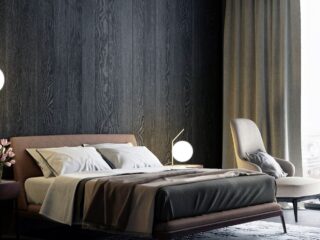
Setting the mood and usefulness of a house relies upon the lighting. In addition to giving light, the right light fixture upgrades the style of your space and creates a comfortable atmosphere. It tries to pick the ideal fixture for each space with countless styles, types, and materials available.
This thorough guide will assist you with picking the ideal light fixture for each room in your home.
Understand the Function of Each Room
It means a lot to ponder each room’s essential capability prior to exploring design options. Various rooms require various kinds of enlightenment. The living room, which is a space for unwinding and delight, benefits significantly from layered lighting, which consolidates ambient, task, and accent lighting.
Ambient lighting works on the general atmosphere in the kitchen, while task-oriented lighting is fundamental for food preparation. The lighting in rooms can be acclimated to give a comfortable and calming atmosphere.
Restrooms need both gentler-encompassing lighting for unwinding and bright, in any event, lighting around mirrors for preparing. Ambient lighting and a dramatic chandelier or pendant light function admirably together to give a point of convergence in dining spaces.
Match the Fixture to the Room’s Style
Your choice of light fixture should complement the overall style of your space. Fittings are available for any style, be it boho, industrial, modern, or classic.

For contemporary houses, select simple designs with minimal elaboration and clean lines. Classical settings might benefit from fixtures with elaborate details, such as chandeliers or wall sconces in classical finishes like brass or bronze.
Industrial designs often feature raw, unpainted fixtures, exposed lights, and metallic finishes. For a more diverse style, use natural materials like macramé, bamboo, or rattan.
Consider the Size of the Fixture
Scale is a crucial factor when choosing a light fixture. A fixture that is too big could overwhelm the room, while one that is too little could become lost in the space. A good general rule is to add the length and width of the room in feet, then convert that to inches for pendant lights and chandeliers.
For example, a fixture with a diameter of approximately 22 inches would be required in a 12′ by 10′ space. Pick a light fixture for dining tables between 33% and 66% of the width of the table and balance it somewhere between 30 and 36 inches above the tabletop.
Make sure the floor and the bottom of the fixture are at least seven feet apart in entryways.
Layer Your Lighting
Combining ambient, task, and accent lighting is known as layering light. This procedure ensures that your space will be both utilitarian and lovely. Recessed lights, chandeliers, and ceiling-mounted fixtures are normal types of ambient lighting that give general illumination.
Task lighting—vanity, work area, or under-cabinet—focuses on reading, cooking, and makeup. Accent lighting like wall sconces, track lights, and LED strip lights highlights architectural details, beautiful aspects, and artistic works.
Choose the Right Bulbs
The lightbulb you select greatly influences your lighting’s atmosphere and functionality. The brightness of the lightbulb should match the space’s function. Living rooms, for example, would require 1,500-3,000 lumens, though work areas like kitchens could require 4,000-8,000.

Color temperature impacts mood, which is expressed in Kelvins (K). While cold light (4,000K-5,000K) is more appropriate for regions focused on tasks, warm light (2,700K-3,000K) creates a comfortable ambiance.
Since energy productivity is critical, select LED bulbs that are more potent and energy-proficient than incandescent or halogen alternatives. For a variety of options, consider visiting a light fixture store in Edmonton.
Factor in Dimming Options
Any lighting arrangement can benefit from incorporating dimmers, which let you change the brilliance to suit the situation or time of day. Check before you purchase because not all lights or fixtures are dimmable. Dimmers can extend the existence of your light bulbs and assist with saving power.
Don’t Forget Ceiling Height
When choosing the type of fixture to utilize, the height of your ceilings is a crucial consideration. Because flush or semi-flush mount lighting does not dangle too low, they work ideally on low ceilings.
Most fixtures, including pendants and chandeliers, can be mounted on standard ceilings as long as they are appropriate for the available area. To create drama in high ceilings, use more layers or larger, eye-catching fixtures.
Pay Attention to Materials and Finishes
The material and finish of your fixture can greatly affect how it looks and fits in your space. Select materials that blend in with or enhance your room’s design. For instance, glass fixtures might be elegant, while choices made of wood or cloth can be cozy.
Finishes can be harmonized with other hardware in the room, including faucets or cabinet handles, to create a cohesive impression. Antique brass, brushed nickel, chrome, and matte black are popular finishes.
Incorporate Smart Lighting
Smart lighting technology enables you to control your lighting fixtures using a smartphone or voice assistant.
Adjustable brightness and color allow you to tailor lighting to your activity or mood, while scheduling allows you to automate lights to switch on or off at certain times. Energy monitoring tracks usage and optimizes efficiency.
Test the Fixture Before Installation
Before installing the new light fixture, make sure it fits the room and provides the desired brightness. Use temporary hooks or stands to preview how it looks in the room. This step can save time and effort if adjustments are needed.
Final Thoughts
Selecting the ideal light for every space in your house requires balancing design, proportion, and utility. Your decorative style, the room’s intended use, and the technical features of lighting will help you design a place that is both pleasing and practical. The right fittings will make your property appear ideal and provide pleasure in everyday life.









